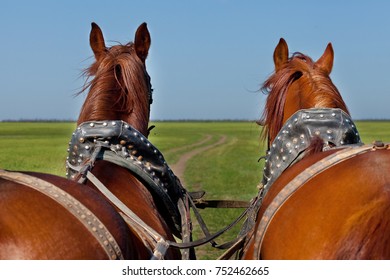

the journey is properly planned and time is kept to a minimum.For more information about documentation requirements please see 'Transporting livestock by road: paperwork'.Īll persons who take animals on a journey, whatever the length, should always apply the following good transport practice:
HORSE DRAWN CART COW TIED BEHIND DRIVERS
Anyone transporting cattle, sheep, pigs, goats, domestic equidae or poultry by road over 65 km is required to hold valid certificates of competence for drivers and attendants of road vehicles. The welfare of animals during transport is protected under Regulation (EC) No 1/2005 on the protection of animals in transport and related operations.Īnyone transporting vertebrate animals on journeys of over 65 km (approximately 40 miles) as part of an economic activity must hold a valid transporter authorisation to do so. Back to top What are the principal requirements?

Approved assembly centres, including livestock markets, may also be regarded as places of departure (see 'How does a livestock market affect journey times?' below).Ī 'place of destination' is the place at which an animal is unloaded from a means of transport and either slaughtered or accommodated for at least 48 hours prior to the time of departure. 'Journey' means the entire operation of transport from 'place of departure' to 'place of destination', including loading at the place of departure, any transfer during the journey, any unloading, rest / accommodation and loading occurring at intermediate points in the journey, until all animals are unloaded at the place of destination.Ī 'place of departure' is the place at which the animal is first loaded on to a means of transport, provided that it has been accommodated there for at least 48 hours. If not, then the time spent travelling to the market must be added to the journey from the market to establish the journey time. Approved assembly centres, including livestock markets, can be places of departure if the animals have travelled to the market less than 100 km (approximately 62 miles) or have been there for at least six hours with sufficient bedding and water. When transported in connection with an economic activity (in other words, a business or trade) horses (except registered horses*), cattle, sheep, goats and pigs must not be transported for more than eight hours unless the additional requirements for vehicles carrying out long journeys are met.Īt the final place of destination animals must be unloaded, watered and rested for at least 48 hours. Note: although the United Kingdom has left the European Union, certain pieces of legislation (formally known as 'retained EU law') will still apply until such time as they are replaced by new UK legislation this means that you will still see references to EU regulations in our guidance.


 0 kommentar(er)
0 kommentar(er)
